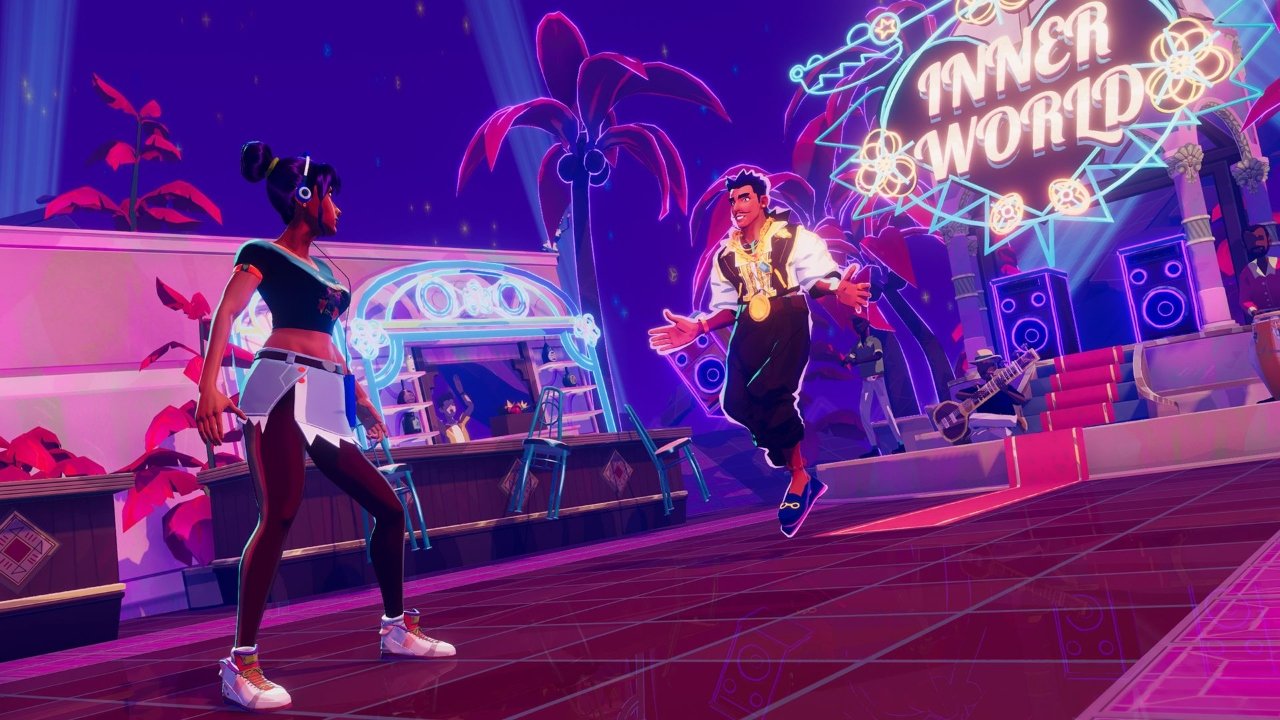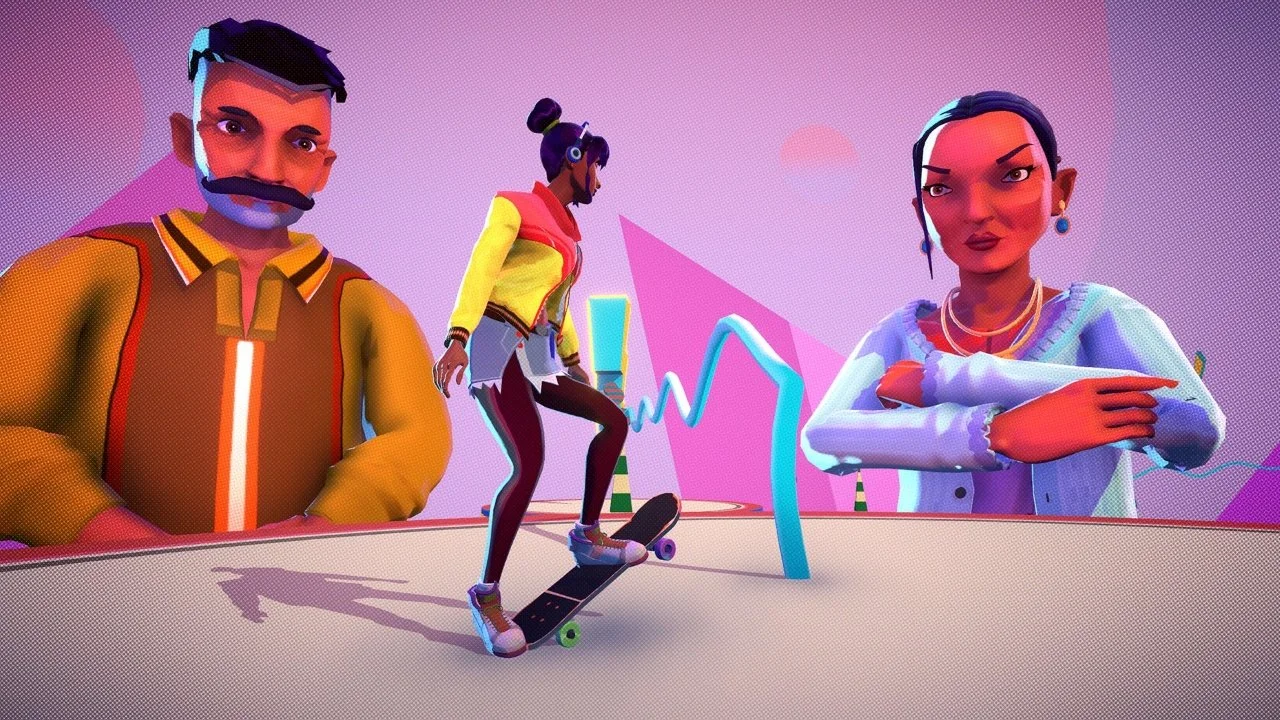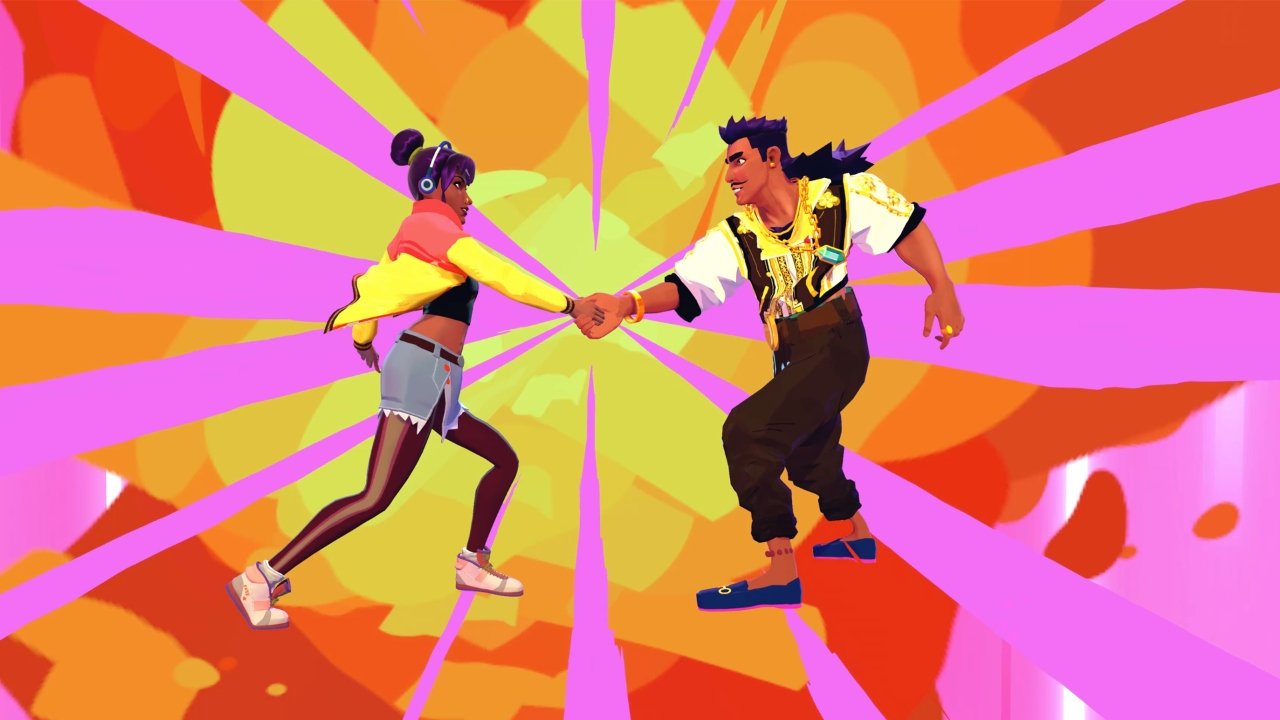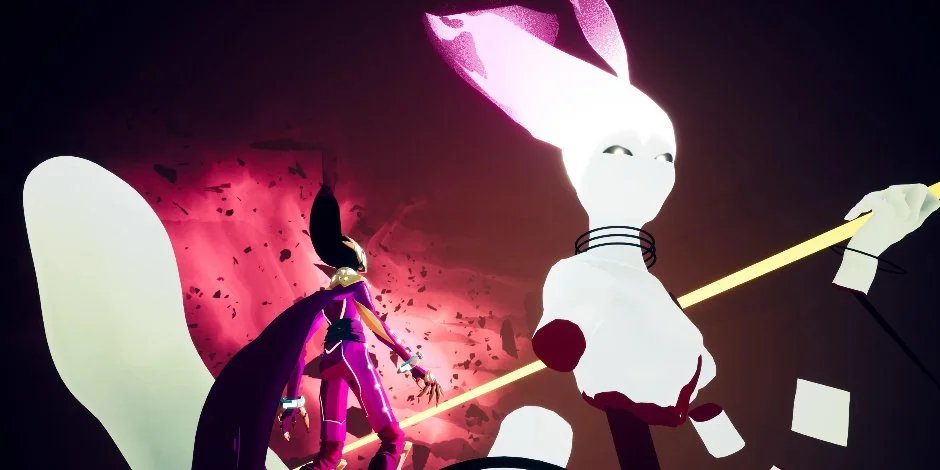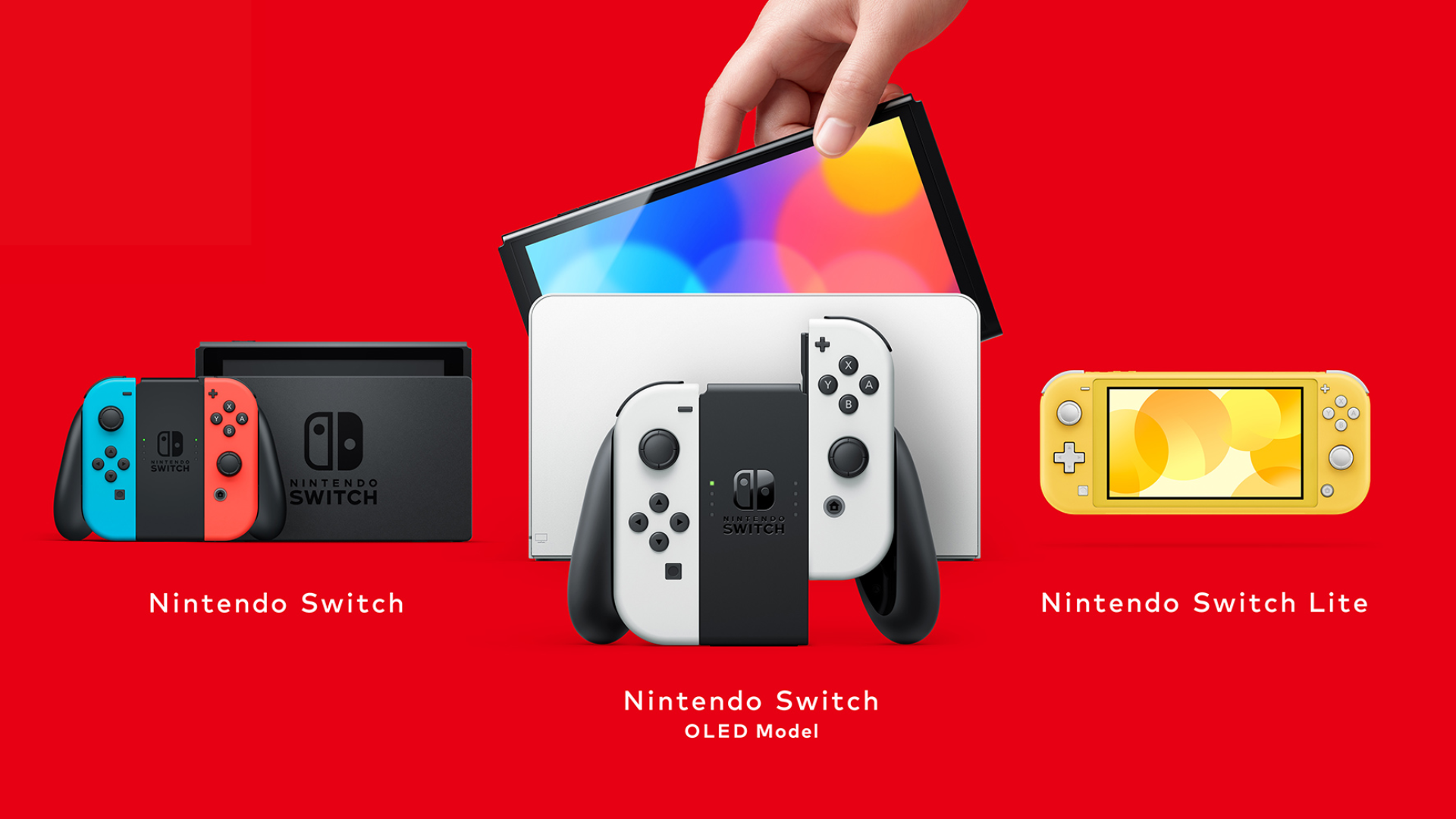I recently had the chance to sit down with Chandana Ekanayake, the founder and creative director of Outerloop Games, to preview new footage of their upcoming game, Thirsty Suitors and talk a bit about the game in greater detail. Ekanayake also provided a bit of commentary over parts of the video footage, which I have included below as part of my impressions from the footage. Hope you enjoy it!
Gameplay Demo Breakdown
The video opens with Jala sitting, alone, on a travel bus that’s driving through a dense forest. Ekanayake sets the scene for me: “So she’s coming back before the beginning of the game, trying to figure out what to do with her life, and here we are.” From there, Jala suddenly finds herself transported to a colorful, mental world based around a dating quiz from the magazine resting in her lap.
From Ekanayake: “So the game is a turn-based RPG that has skating and cooking and battling your exes and disappointing your parents and narrative choices. So one of the things we wanted to get started was we wanted to set up the starting Jala for the player, so we do that through skating through a romance quiz. We’re introducing both the skating and, you’ll see, some questions and answers.”
The romance quiz introduces several of the characters players will encounter throughout the game before ending with the first of Thirsty Suitors RPG mechanics: Thirstsonas. Points in each of the three categories affect Jala’s stats in battle, and Ekanayake confirmed for me that these points can be earned by doing a variety of activities throughout the game, including skating, narrative choices, battles, and cooking.
The final section of the demo shows off the first of Jala’s battles with one of her exes, an overzealous young man named Sergio whom Jala dated in third-grade. The battle shows off Sergio’s bombastic personality, the dialogue choices Jala can make during battle, and all the different systems that go into battling, including weaknesses, the active-battle system, and the inner worlds the exes can access. Ekanyake describes these inner worlds as an imaginary place where the exes look as “they would like other people to see themselves.”
The battle ends with Jala and Sergio reconciling and moving past their baggage, prompting Jala to ask Sergio for a ride home. After he drops her off, Sergio meets up with the rest of Jala’s exes and tries to tell them that it might be worthwhile to try and seek closure with Jala. After the demo, Ekanayake provided a brief breakdown of some of the other systems in the game, including cooking with Jala’s parents to try and repair that relationship and fending off a wave of random suitors sent by Jala’s grandmother.
Interview
Hayden: Seeing these ex boss battles are there opportunities to train and grind on smaller combat opportunities?
Ekanayake: Yeah, so it’s based on chapters and the first chapter is real linear just to set you up, but then once you wake up at home in the morning you can decide to cook or go to downtown or go to the skatepark and do challenges. And then there’s narrative specific things: your sister is still mad at you so you’re trying to track her down initially, and then one of your exes shows up and that’s a whole thing. So it’s a linear story but has a bunch of content and things you can do in each day, and the player decides when the day is over, essentially.
Okay, so there’s not- there isn’t like an energy- like you just have a certain number of activities you can do before the day just naturally comes to an end? Like you can do as much or as a little as you want?
Right, so there’s like nighttime skating and nighttime doing things. Cooking though, your mom will go to sleep a certain time, so if you battle Sergio and you’re home late she’s like, “I’m off to bed.”
Yeah, no cooking for that day!
Yeah, you can do it earlier in the day and things like that, but generally some big event like a suitor battle or ex battle will make it go nighttime and that’s like your cue to- that’s all that’s like the majority of things for that day, but you can go skating, do a couple challenges if you want or go grind the rando suitors downtown.
And are there, other than the night skating and the cooking, other things that can only happen during the day or only happen during the night?
We’re still figuring that out. We’re also trying to let the player drive the pacing a little bit. I mean we obviously want to make the pacing as interesting as possible for the player, but there’s things they want to get into- cause it’s a weird game, right? We’re trying to make it approachable for some who might just be into the story and try to also have enough content and depth for players that might not be familiar with the South Asian theme, but also- hey I like the skating aspect, gimme more of that or I like the cooking aspect give me more of that, or I just want to rando battle and grind, give me more of that. So we’re trying to keep it flexible where sometimes the pacing will dictate what you can do, sometimes we’ll let you do it and then we’ll try to keep the pacing going with the narrative moments.
Yeah, to kind of get you back on the story. One of the more general questions I had, cause there are kind of a lot of different gameplay elements to it: you’ve got turn-based battling, cooking, skateboarding. What was the inspiration for each of them and why you wanted to have all of them in a game?
Yeah, so we started with theme. I had the name, Thirsty Suitors, four years ago, and we started thinking about it, and I was like I wanna do a game about South Asian culture and family drama cause I’m an immigrant myself from Sri-Lanka. I moved here when I was young, most of the folks on the team are immigrants and we’re spread across four continents, like we’re a fully remote team, and we’ve been that way since we started five years ago. So, you know, we’d been talking about what would be some great aspects of the culture and bringing in. We wanted to do a fighting sort of battle system, but we also wanted, like, do you remember Intel Battle from the old LucasArts games, Monkey Island stuff? So is there a way we do that but put a little spin on it?
And so having that turn-based approach gave us time to do the conversational bits and still feel like a part of the flow and make the narrative choices and remember those choices later. So we recall those, so like a turn-based thing made sense, and then the quick time events- they’re kinda quick time events but they’re different because they come to the beat. Like they happen as the music is playing, so when you play it, there’s a nice rhythmic pacing to that. We took some inspiration from Paper Mario: Thousand Year Door, which had like an active turn-based approach which I personally loved so that’s where we started from.
Yeah, when I saw the blocking and timing on that, that was the first thing I went to. Paper Mario: The Thousand Year Door is one of my favorite games of all time so…
Same, same. Yeah, that’s where we started. I mean this happens on every project where I’m like “I want to do this thing, let’s start with something we know and see where it goes.” And it kind of starts from that and then it became its own thing, like the mood system which is- like if you’ve played a Yakuza game it’s like status effects or poison or things like that, but we themed it around this particular sort of story and narrative. And the exes came out of the idea that “Why are we fighting? Shouldn’t this be a date?”
So having the idea of there being a dating history, there’s a built in antagonism there with like, Jala had broken up with all of them and they have unresolved business and do they really want to do that. And then we worked her sister as a narrator into it so the player gets a little more context of each of the battles and Jala- we wanted to play with the idea that “Yeah I remembered it one way but you might have remembered our relationship completely different back then.” So we kinda play off of that, too.
I like that inner world aspect of it where it’s like, is that actually their inner world or is that just what Jala is seeing their inner world as? What level of unreliable narrator are we working with?
Exactly, exactly. So we kind leave that up to the player, but I think when we first released a trailer there was like a Scott Pilgrim comparison and I think that that definitely is like- what I loved about Scott Pilgrim- I actually rewatched it, I didn’t like Scott at all, he was a real jerk. But what I loved about that was the Magical Realism, to be able to have the grounded real world and have moments that are like, yeah the magical realism aspect, the surreal aspect where the emotions are high. And the visuals are kinda, represent that too, and that’s what we thought would be a cool way to explore these relationships.
I was gonna ask if you’d gotten the Scott Pilgrim comparison, I didn’t want to bring up myself cause I figured…
Oh no, no that’s okay, that’s fine, yeah. But I think that’s a very cosmetic sort of comparison cause the movie doesn’t play that way, you know, not the way the game plays.
He’s fighting somebody else’s exes, it’s very- yeah, it’s less personal than this story.
Right, and for us it’s about resolving those sort of memories and ideas. And then skating is something Jala used to do when she was younger so she’s like trying to get back into that but like the town- so I live in Washington state and before Microsoft and Boeing there’s a lot of logging towns that died out. A lot of them tried to change their business and some of them tried to be a Bavarian themed town, that’s one of the towns near where I live, and for us, Timber Hills is a place we made up where we’re like okay this town tried to build a theme park and they ran out of money.
So it’s called Barefoot park, the skaters took over, that’s where Jala used to skate in high school, and it’s like this abandoned theme park where Soundie the Bear, someone that’s still in the mascot suit from back in the day, that runs the skate park. So we tie in the Thirstsona points to skating and things you do in skating effects sort of items you can use in battle. Things you cook at home are like healing items for Jala, so all the three systems we’re finding ways for them to work together, all tie back in narratively and mechanically.
And the skating is kind of contained to the skate park?
The skate park and then there’s a downtown. When we first started you were walking around, but we were like “We have this skating stuff that works really well, so let’s just make the downtown area”- it’s a like a small block, like a closed off- walking downtown, brick-paved. So we turned that into a skating area, so when you got downtown you skate around, and there’s like tricks that you can do and challenges you can do, but also it’s just a way to navigate through the space. And there’s like the diner you go into and the general store, and the bar, and your Auntie Chandra who has a body shop where she’ll paint your skateboard and things like that.
So yeah, and if you’re not into the skating- and the skating is not as deep as Tony Hawk but there’s a lot of alts and combos you can do so it’s more like Jet Set Radio with a bit of Tony Hawk. But you don’t just fall off your skateboard, you just bump into things and you stop and you lose your combo, but like for people that really care you can run a whole line across the skate park or through the town or aerials and you saw wall runs.
In that downtown you said there’s like challenges and stuff like that. If you complete those can that factor into the RPG mechanics?
Yes! So there’s a whole sort of money system that town adopted years ago called Quinchos, and everything, everyone loves Kquenchos. It was the thing that was gonna be the big thing when the theme park opened, but that never failed, but there’s plenty of Kquenchos to go around. That translates into like, you can give your mom some Kqunechos and she’ll make a snack for you, or you can get your skateboard painted or you can buy gifts and items to use in battle at the general store. And then you do challenges to earn more or things like that, too. There’s a sort of multiple piece economy that ties it all together.
What exactly are you trying to convey with Jala and her family and the reconciliation with her exes and all of that?
At the end of the day it’s a celebration of culture for like queer culture and also South Asian culture, and then some of the exes, they’re like outside of that culture too, but we were like how do we make a game about- people make mistakes and like want to reconcile, so there’s no bad guys in the game. Even your grandma that’s gonna probably show up at the end of the game isn’t necessarily- there’s like a perspective difference, so it was more- our idea was to explore our experience with our families, cause we immigrated when we were younger.
I have a better understanding now working on this game, what my mom was thinking when they moved, what was important to them and why they moved us here, so a lot of this was therapy in a way to kind of explore some of those ideas for myself and several of the folks on the team, and also the different sort of recipes we brought in are things we personally would have made with our folks or we grew up with. The way our approach is we wanted to invite you into our home, and if you’re not part of the culture, we’re hoping to give you like a perspective that you hadn’t seen before, and for anyone else who is part of the culture hopefully it resonates with them.
But our approach has been if you travel someplace you’re not familiar with and you get shown around by someone that is from that space, it’s always like a cool experience cause you get to see it from their perspective. And that’s been our sort of thematic approach to this game. So a lot of personal stories, a lot of soul searching, cause we were like how much do I want to talk about that? Some of these characters are based on variations of family members, so hopefully they never play it, but… or recognize it…
That thought did occur to me and I wrote that down and then I crossed it out cause I don’t know if that’s too personal to ask…
No, no, no, no! It’s a very- and that’s the balance for us is: the theme might not resonate initially, but we feel like there’s universal truths in a relationship, a breakup, parental pressure, generational pressure, making mistakes in a relationship, finding love, and all those things- I feel like people can still relate to, and then mixing that with gameplay that feels a little more approachable we hope is a good combo.
You mentioned that you came up with the name Thirsty Suitors four or five years ago? How did you come up with that name?
So Meghna Jayanth, she worked on 80 Days and Sable, she’s the writer on this project and we worked together on Falcon Age. She’s from India, lives in the UK part time, and I’m from Sri Lanka, but we were talking about arranged marriage as like a sort of cultural aspect and what people think about it in the West and what people think about it growing up. I’ve had family members go through that, so we’re talking about the idea of suitors and I was like “Oh what if we do- it would be cool to do…”
So initially it was a game about arranged marriage, but we decided not to focus on that because it's not something I personally have experience with and she doesn’t either, so we felt like it wasn’t our story to tell. And there’s lots of different opinions of if that’s good or bad or whatever, and we’re like “Let’s make it more about Jala and her personal experience and her exes,” and that felt like a more truthful story that we could- a game and story we could tell. So there are still thirsty suitors, which are the random ones that show up, but I just really like the name and thought it could work.
About the RPG elements and upgrading Jala and the three different Thirstsonas that she has, how deep are those customization options? How deep can players spec into different aspects of her character?
We bounced around the idea that if they decide to just go in deep with one of them we have to make the game work for it. But we definitely give you- some people are gonna min-max, and like “I’m gonna go attack heavy” as you do in an RPG, right? And some players are gonna be like, “I’m gonna balance and just be mid-range all of it.” So we give the player the option to grind or do other things and there’s plenty of other ways- so there’s that aspect, and then there’s items and gear that can complement those things later in the game. This is the thing I loved about Elden Ring, in which I just spent 150 hours: the game doesn’t care if you come in underpowered or overpowered, they let you just play the game, right? And those are my favorite kind of RPGs, where the game isn’t constantly trying to balance itself. We’re not really a grindy game. It’s not a huge game, but like if you spend the time to do it, we want to reward you. And if you want a real challenge and go completely underpowered, we want to reward you. That’s fine. I like that sort of philosophy of RPG design.
I didn’t realize that the narrative choices factor into the RPG mechanics and they kind of meld with them. Do they have any kind of narrative significance?
They do, they do. We keep track of your small choices so we call those back later with those characters. What you decide to say to Sergio in that battle will come up next time you- there’s like different sort of dates you go with them and different things they want you to do, and they’ll maybe do a cooking thing or “Hey this skate punk’s bothering me, can you go take care of him Jala for me?” So there’s like an arc to every sort of ex and we’ll call back specific decisions you made in those circumstances.
So is it just those small decisions or can it have a wider scope on the story, like not necessarily multiple endings but like change how the ending…
So I will say depending on sort of your relationship status with those exes, they may or may not show up at the end to support you in a thing at the end.
In a thing, okay.
[laughing] There are sort of- I mean so narratively we’re telling a story and there are branching parts of it, but it’s not like “Will he survive or will he die” kind of choices, it’s not that type of game. And frankly, I personally I don’t like those kind of games. I like games that have sort of like- tell me a good story, like Yakuza, there are choices I make and it does get called back, and it feels like I made those. You know, it feels more impactful as a player.
I came away very impressed with the little bit of dialogue I saw between Jala and the narrator and her sister and Sergio and how every character really does have a distinct voice. Jala really stood out, and I’m curious how you came about finding her voice.
It was a lot of iteration. So for us, I do story with Meghna Jayanth, she does all the writing. So we’ve been meeting weekly for two plus years now, I think. So we kind of established generally who she is, but then what’s her personality like? We knew she had to resolve all these things, so the first thing we built out was the Sergio battle. At first she was real mean, and then Sergio- no we made Sergio real mean, but – we play tested all the time, and players were like “We love Sergio!” So we had to make him a little more kinder and then adjust Jala’s kind of approach to it, and it took as a while to find the theme.
And the theme is like, yeah there’s hurt feelings and there’s memories that aren’t really the same, but at the end of the day these are more adult characters who are trying to resolve these things. And she could be even more mean about it, but it’ll come back around. So that’s the thing we feel we haven’t really seen- even though it’s a cartoony, stylized game, these are 20-something characters and we wanted to have a little more adult dealings of relationships and breakups and those kind of things. So we were kind of thinking about that aspect and what would these characters do if this happened in real life.
And then finding tonally “Are we being too mean? Are we not being mean enough? Are we giving the players enough choices there?” Yeah, we went through a lot of iteration of how much- well, both the mechanics of the fight but also how much the dialogue branch or how much it matters or didn’t matter. Having talked to other developers who have done real, massive branching stories like how much work that is and how little sometimes the player sees it! They don’t realize all that’s going on! So at the end of the day they’re just like “Eh, just tell me what’s going on, tell me the best story.”
And so as a small team we’re like “What’s possible?”, and I think it’s like going from point A to point B but then like branching and coming back around to it was sort of what we think is doable and we can make the dialogue snappy and interesting. A lot of that really didn’t come through until we cast and got actual, professional actors to say the lines. Now we’re like rewriting stuff in that voice cause, just like everyone else on this project, they bring their own sort of specialty to the project and it’s like it gives life to these characters. I hope that answered- I don’t know if I answered your question [laughs].
You did! The way I was thinking of it was more about her unique voice and where she’s coming from and how her background, not just culturally but also her experiences like leaving home, how that all factors into her personality while also making room for the player to not necessarily dictate her personality but pick a certain path for her.
Yeah, I think for us we thought of Jala having a specific personality, and there are choices the player can play with within that space, but essentially you’re not playing as yourself: you’re playing as Jala. So there is a voice there, and there’s different approaches to games that do that, right? Like Mass Effect, you’re Shephard but really you’re you. And we noticed when we play-tested the personality test, players were starting off answering the questions as themselves and then started role playing as Jala, which is something we saw. They’re like “Oh, this interesting.” I don’t know if there’s a right answer, but this is sort of the approach we’re taking that this is Jala’s story, Jala’s perspective, and the player can play within that space.
I imagine it must have been kinda satisfying to see those play testers start to role play as your character.
Yeah! It means we’re doing something right. Yeah, that was neat. As far as Jala, she’s probably a combo of myself and Meghna and our stories and our relationships, so yeah.
You mentioned there’s a multifaceted economy and there’s different shops and things you can do. Is there any kind of impact that Jala can make on the town and kind of change- open new shops or that kind of thing?
No, it’s a small RPG so there’s no base set up or big changes like that.
Out of curiosity, is there any one ex that is your favorite?
Yeah, I think there’s one. Her name is Diya, she has the pink buns. Her world was one of the first ones- so we were still figuring out what the theme of those inner worlds were, and once we did Sergio I had a good idea of what I wanted to do with the other ones in terms of like the inspiration for it. A lot of it was “We’re gonna kinda rip-off ‘90s music videos.” I was a huge Hype Williams fan, who directed some of the most amazing Busta Rhymes, Janet, bunch of great videos that were all like these mini movies. So I made a playlist of a ton of Hype Williams videos and I was like “Oh, I like this aspect and this aspect” and that became sort of like “Okay, their inner world, it’s sort of like a music video, what can we do in that space?” And there’s a lot you can do in that space, so once we kinda decided on that theme, Diya was the first one to go real far with that idea, and I like the way it came out. I’m looking forward to showing that off.
Thirsty Suitors does not yet have a release date, but players interested in the game can wishlist it now on Steam.
